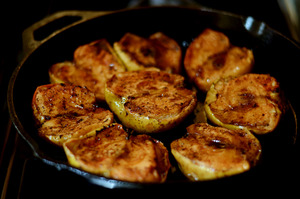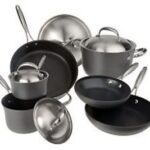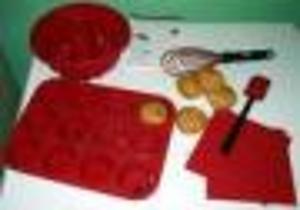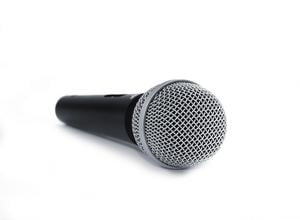I grew up eating food that was mostly prepared in a cast iron skillet. By the time I began to cook in earnest, non-stick cookware was in vogue. Being a modern woman, concerned about my cholesterol level and ability to scrape off burned cheese with ease, I bought a beautiful set of nonstick ware and used it happily for years. During those years I could never figure out why I couldn’t get some of my favorite homey foods to taste as good as when Mom made them.
My cornbread didn’t get the delicious crispy bottom like Mom’s. My fried potatoes, though leaner, didn’t brown right and lacked a certain flavor I remembered from childhood. Finally, it dawned on me – cast-iron skillet. I dug the old iron skillets I had inherited out from the back of the cupboard and began using them.
Everything stuck. No matter how much oil I used or how closely I watched, all the yummy crusty edges I had longed for usually remained stuck to the bottom of the pan. Clean up was a nightmare. I almost gave up. But then I learned how to properly season the skillets and started over again.
With time I became, if not an expert with cast iron, knowledgeable. Through the years I’ve learned several tricks that may help your experiences with cast-iron cooking be good ones.
First, always start with a well-seasoned pan. Second, never wash it with soap. These are common tips that most homemakers know about. But here are some things you may not know:
Hot Pan + Cold Oil = No Stick
This is a cooking tip I learned from the Frugal Chef many years ago. It works for all types of cookware, but is especially helpful with cast iron. Wait until the pan is up to temperature before adding oil. Allowing the metal to expand first means all of the small pits and imperfections in the metal expand and create a smoother surface for oil to sit on top of.
Metal on Metal
Not only will the high heat of a cast iron skillet possibly melt a typical plastic spatula, it simply won’t slide as cleanly between the pan and the food as a metal spatula will. A good metal spatula with a slightly beveled edge will help make sure those crispy bits stay where they belong – on the food.
Lower the Temperature
Anyone used to cooking on nonstick ware will have to learn how to adjust the heat when using a cast-iron skillet. Because the iron is an excellent conductor of heat, it heats quickly, heats hotter, and stays hot longer than other types of cookware. If you usually fry potatoes on medium-high, knock the burner down just a skootch the first time you cook them in cast iron.
The more you use your cast-iron skillets, the more you will enjoy using them. An oft-used and properly cared for iron skillet takes only a bit more oil than your average nonstick pan, but the flavor and texture it imparts is far superior. I still use the slidey stuff for most of my cooking, but for some foods, cast iron is the only choice.





